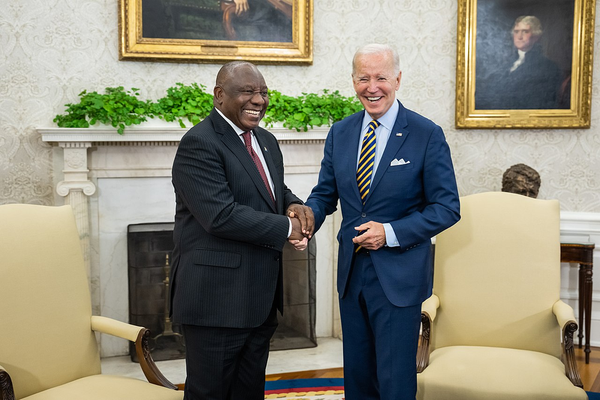Mother Africa’s Treasures
When Altmann started the battle with Vienna for The Woman in Gold, she made sure it was established that the painting was taken illegally, stolen in fact. The artifacts and people of Africa were also taken illegally, and thus stolen.

The Woman in Gold
I watched The Woman in Gold, a masterpiece directed by the talented Simon Curtis and produced by the duo of David Thompson and Chris Thykier. The movie tells the story of a Jewish woman named Maria Altmann, portrayed by actress Helen Mirren, who lived in Vienna through WW2 German oppression and witnessed her family treasures being looted by the Nazis. Among them is the famous “Woman in Gold” painting, considered a national treasure in Austria— think Mona Lisa reverence. The painting, a portrait of Maria Altmann’s beloved aunt Adele Bloch-Bauer, was beautifully crafted by the legendary Austrian symbolist painter, as well as one of the most prominent members of the Vienna secession movement, Gustav Klimt.
Naturally, I did my research. The painting is worth over one hundred and fifty million dollars and was owned by Oprah at one point. It presently rests at the Neue Galerie in New York. The importance of art in all its glory cannot be emphasized enough. Men such as Leonardo Da Vinci, Michelangelo, Pablo Picasso, Michael Jackson, and Wolfgang Mozart — among a host of others — have been deeply revered because of their artistic creations.
Art is literally life! Art from the past has a special purpose — it tells the narrative of the period during which it was created. We are connected to the zeitgeist, the essence of the period, and the existential angst of the time. And of course, art is beautiful. African art is rich, diverse, and colourful. It ties in with our rich history and represents the bold and the beautiful. From the great pyramids of Giza to the not-so-popular pyramids of Sudan, down to the Bronze carvings of the Benin and Ife Empires and the significant Iho Eleru, a thirteen thousand-year-old cave discovered in Isarun, Ondo state which is covered with drawings and broken pottery scattered all over its environ. Art is life.
African Art
Many of Africa’s rich artefacts are lost to time either by negligence or by deliberate action such as the looting and destruction of the famed Benin Empire on the 18th of February 1897, the systematic plundering of the Egyptian empire, and the deliberate crippling of the Zulu Empire, among others. In all these instances, the powers that subjugated these empires deliberately looted the best of the artefacts these empires had to offer and destroyed the ones they could not carry. Those artefacts are on display in the most prestigious art galleries across the world.
It took eight solid years of a legal battle. but Maria Altmann was able to get back her family’s prized possession. The Woman in Gold was later sold for over one hundred and thirty-five million dollars. There have been talks of repatriation for Africa but they have largely remained that — merely talks. The Ife bronze Head presently rests at the British museum, as does the forty-one-centimetre-high bronze head of Queen Idia of Benin, among other notable collections. The artefacts have taken on a deeper meaning; they represent the zeitgeist of the precolonial times and now stand as an admittance of war crimes, genocide, and unwarranted destruction. As long as those artifacts exist, they will always be a reminder to those that have them, and their rightful owners, of the willful destruction of several peoples and their history.
What is done can not be undone. History is set in stone and can never be altered, but the present shapes the future. The discussion must be had; Should these artifacts be returned to the descendants of the rightful owners or should they be kept as spoils of a long-forgotten war? The more important fact is the setting of the records straight, making history right. When Altmann started the battle with Vienna for The Woman in Gold, she made sure it was established that the painting was taken illegally, stolen in fact. The artefacts and people of Africa were also taken illegally, and thus stolen.

The Great return
Returning these artefacts to Africa alone will not cut it, however, admitting to the theft would be huge. Closely related is the matter of reconstructing history, the facts are with those that altered it in the first place. Much of Africa kept its historical record via oral accounts told by one generation to the next and through artistic works, which were created not as pieces to be collected by wealthy individuals or displayed in museums, but as totems of worship and objects of deep spiritual inclination. After the schools were established by the Europeans, history was deliberately re-engineered by the victor to start with the advent of the invaders — an event which was highly romanticized, much like the account of the “discovery” of River Niger by Mungo Park.
Park was actually led to the river by the people living along its banks, but that narrative wouldn’t serve the idea of superiority. For years after the establishment of missionary schools, the students were forbidden to speak in their mother tongue; speaking languages other than English, French or Spanish would mean the individual was speaking in “vernacular” and such a person would be severely dealt with. Africa still remains to this day the only continent where the language of instruction is largely not local to the people. This carried on to more recent years even after the colonialists had left. Cameroon is a stark reality of this dilemma, the conflict between anglophone and francophone people, sometimes referred to as the Ambazonia war, attests to this ugly truth. The colonization never really stopped. Our culture has been systematically demonized and handed back to us as a third-rate manner of human conduct so much that we are now westernized, a shadow of our former selves while the very artistic objects that represent the “evil and corrupt” culture rest pretty in prestigious museums all over Europe and America.
Will the return of the artefacts correct the ills of Africa? No (as far as I can conjecture), it won’t, but it will definitely jump-start its reinvention. Africans will start to appreciate their culture’s art and by association their culture, language, and history. We do not necessarily have to go back to worshipping the deities endogenous to us, but we will through our art appreciate them. Before you think this is preposterous, look at what has been done with Thor the Marvel comics character! Thor is essentially the Norse god of thunder romanticized to such an extent that it appeals to everybody. The revenue from the movies, close to two billion dollars, would solidify this position. The Yoruba people have a god of thunder too; Sango, who has seen a fair share of screen time locally but not the kind of appreciation enjoyed by Thor.
Conclusion
Africans have been taught to teach themselves that their rich history, which is tightly interwoven with their culture and religious heritage, is evil and should be discarded, objects of worship destroyed — yet the best of those are in museums in Europe and America. This notion still carries on to this day all over Africa. Maria Altmann won her prized treasure and sold it less than a year later. Whatever we do with the reparations, let it be known that setting the records straight is going to be far more valuable to us, for at that moment we will realize the enormous potential the world has been denied by virtue of our subordination.

If you enjoyed this article, kindly subscribe to our weekly newsletter: "News From Around The Motherland," to stay updated on opinion articles and in-depth explorations of diverse African subjects. Thanks for reading.





